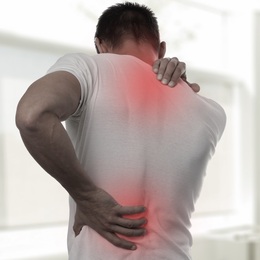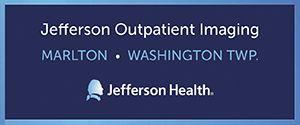
Anyone who’s suffered with prolonged pain understands how it is profoundly difficult to live life on your terms when you’re besieged by discomfort without relief.
Persistent pain presents itself in infinitely individualized and different ways: Some is temporary, like an injury that will eventually heal if handled properly; some is prolonged or conditional, like managing chemotherapy treatment or a diabetes diagnosis; and some comes from a terminal condition, which then demands palliative and end-of-life care.
The science of helping people manage chronic pain is an interdisciplinary branch of medicine calling on a range of professionals to deliver treatment tailored to each patient’s wants, goals and circumstances. In a perfect world, a diagnosis identifies the offending issue so a team of physicians, psychologists, physical therapists and other professionals caring for a patient can begin treating the root cause instead of managing symptoms.
“First, understanding the patient’s medical, surgical and pain history, including any previous treatment outcomes and diagnostic testing, is vital,” says Dr. Young Lee, MD, a double board-certified anesthesiologist and interventional pain specialist at Relievus Pain Management. “Second, identifying any physical signs that may indicate the source and nature of the pain. Third, evaluating the characteristics of the pain, such as its intensity, duration, location, and any factors that alleviate or exacerbate it. Fourth, I consider the psychological, social and emotional factors that may influence the patient’s pain. Finally, it’s important to set goals and expectations along with developing an appropriate treatment plan. This comprehensive approach helps in creating a personalized and effective pain management strategy.”
That holistic approach is what Dr. Stephen Goldfine, chief medical officer at Samaritan, refers to as diminishing their “total pain.”
“Total pain is something we talk about a lot in hospice,” he says. “In my world, pain is not just physical: It’s emotional and spiritual and possibly financial, there’s so many reasons why people have pain syndromes. If we don’t address all of those spheres of care, then we don’t get to that comfort for the patient. … There’s even things like music therapy and massage therapy and things that may help with some of the nonphysical, emotional component of that pain syndrome. If you don’t deal with that, then you’re not really taking care of the entire, total person.”
After the alarming increase of opioid-related deaths since the ’90s and that era’s dependence on pharmaceutical options as the first line of defense, a less-medicinal approach has evolved to help patients manage if not mitigate their pain levels.
“Twenty years ago, obviously opioids were the mainstay, but that’s not something we utilize at this time with the opioid crisis,” says Dr. Andrew Kaufman, executive director of the New Jersey Society of Interventional Pain Physicians. “But I think even before it became a crisis, most really good pain doctors were moving away from that as we saw what the long-terms outcome was.”
“The field of pain has advanced so much in the last 10 years,” Dr. Lee adds. “Prescribing pain meds is no longer the only solution to alleviating pain—in fact, there are so many other non-invasive and advanced techniques now available that are much more comprehensive in treating most pain syndromes. The field has gotten so much more advanced and specialized. My best advice for patients in pain is to see a physician who is board certified in pain management.”
The clarity of having a prescribed course of treatment ahead, if not an array of options to help zero in on what works best for an individual and their specific circumstance, can be a tremendous first step in reclaiming some semblance of a patient’s pre-pain life. It also means being seen as a human being with hopes, fears and loved ones rather than impersonally reduced to their diagnoses and ailments.
“One of the major things we emphasize is teaching those younger physicians to really listen to their patients and their stories,” Dr. Kaufman says. “We need to remember that we don’t treat MRIs, we treat people.”
It also means giving them back some quality time with loved ones, as well as their own autonomy, which is always an important component to consider—especially in patients who want to get the most from the time they have left.
“There’s been a lot of data over the years that shows pain is underdiagnosed and undertreated,” adds Goldfine. “That leads to a decrease in functional capacity for a segment of the population. … [But] you do not have to suffer: I tell my patients and their families all the time that there’s no point in having a pain syndrome. Uncontrolled pain leads to worse outcomes, and if a patient is suffering then their interactions with their loved ones aren’t as vibrant.”
Click here to subscribe to the free digital editions of South Jersey Magazine
To read the digital edition of South Jersey Magazine, click here.
Published and copyrighted in South Jersey Magazine, Volume 21, Issue 4 (July 2024)
For more info on South Jersey Magazine, click here.
To subscribe to South Jersey Magazine, click here.
To advertise in South Jersey Magazine, click here












